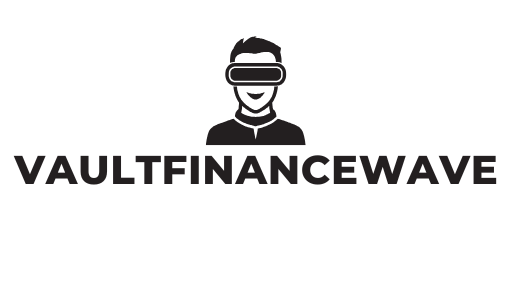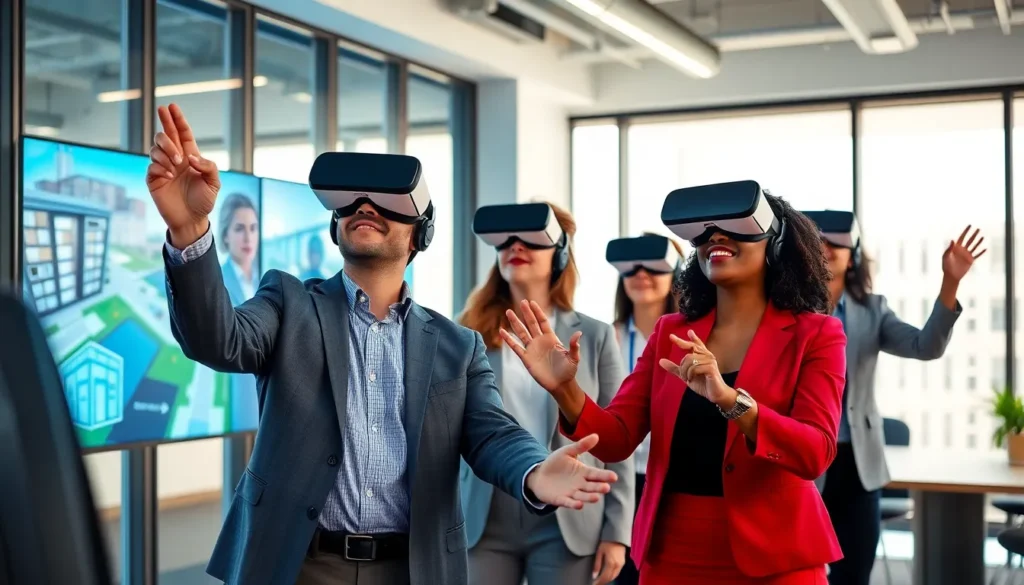Table of Contents
ToggleVirtual reality is transforming the way businesses operate, offering innovative solutions that enhance productivity and collaboration. As organizations seek to stay competitive in a rapidly evolving market, VR enterprise solutions are emerging as a game-changer. These technologies enable immersive experiences that streamline training, improve communication, and foster creativity, making them essential tools for modern enterprises.
From virtual training programs to collaborative design environments, VR is reshaping traditional workflows. Companies are leveraging these solutions to create engaging experiences that not only save time but also reduce costs. As the demand for effective and efficient business practices grows, embracing VR enterprise solutions could be the key to unlocking new levels of success.
Overview Of VR Enterprise Solutions
VR enterprise solutions leverage immersive technologies to optimize business workflows. Organizations utilize VR for diverse applications, enhancing training, collaboration, and product design.
Training Programs
- Interactive Learning: Companies implement VR to create immersive training scenarios, allowing employees to engage in real-time simulations.
- Cost-Effective: Utilizing VR reduces training expenses by minimizing the need for physical materials and travel.
- Skill Development: Participants can practice complex tasks in a controlled environment, accelerating skill acquisition.
Collaborative Design
- Virtual Prototyping: Teams design and assess products in a shared virtual workspace, streamlining feedback cycles.
- Enhanced Communication: VR fosters clear communication among team members by providing a 3D visualization of concepts.
- Remote Collaboration: Geographic barriers diminish, enabling global teams to collaborate more efficiently and effectively.
Workflow Optimization
- Real-Time Data Visualization: VR solutions present data in dynamic formats, facilitating faster decision-making.
- Process Simulations: Organizations can simulate workflows to identify bottlenecks and inefficiencies before implementation.
- Increased Productivity: Immersive experiences keep employees engaged, resulting in improved focus and output.
Industry Applications
- Healthcare: Medical professionals use VR for surgical training and patient consultations.
- Manufacturing: Production lines benefit from VR training for equipment operation and safety protocols.
- Retail: Retailers create virtual showrooms, enhancing customer experiences and product engagement.
VR enterprise solutions become essential tools for businesses seeking to enhance performance and remain competitive.
Key Benefits Of VR Enterprise Solutions

VR enterprise solutions provide a range of advantages that enhance business efficiency and innovation. These benefits include improved collaboration and advanced training programs.
Enhanced Collaboration
Enhanced collaboration is a significant advantage of VR enterprise solutions. Virtual workspaces enable teams to interact in real-time, regardless of geographic location. Participants can share and manipulate 3D models, facilitating a more immersive discussion. Teams engage in brainstorming sessions that promote creativity and innovation by visualizing concepts in a virtual environment. Additionally, VR tools allow for instant feedback and adjustments, streamlining the design process and fostering a culture of teamwork.
Improved Training Programs
Improved training programs represent another key benefit of VR enterprise solutions. Organizations utilize VR for simulations that mimic real-world scenarios, allowing employees to practice skills in a safe environment. These immersive training experiences lead to higher retention rates and faster skill acquisition compared to traditional methods. Courses can be tailored to meet specific job requirements, ensuring that training is relevant and effective. Furthermore, VR technology reduces physical resource needs, resulting in lower training costs while maximizing engagement and effectiveness.
Industries Utilizing VR Enterprise Solutions
Various industries leverage VR enterprise solutions to enhance operational efficiency, training, and collaboration. Below are specific fields actively integrating VR into their processes.
Healthcare
Healthcare organizations utilize VR for surgical training, patient education, and therapy. VR simulations provide realistic scenarios, allowing medical professionals to practice complex procedures in a risk-free environment. Institutions report significant improvements in skill retention and confidence among trainees. Furthermore, VR aids in treating conditions such as PTSD and anxiety, offering immersive experiences that help patients confront fears in controlled settings.
Manufacturing
Manufacturing companies implement VR for equipment operation training and design prototyping. VR facilitates hands-on training experiences that minimize the need for physical equipment, reducing costs and risks associated with traditional training methods. Additionally, teams employ VR to visualize product designs and workflows, allowing for immediate feedback and iterative development processes. This leads to decreased time-to-market and enhanced product quality.
Education
Educational institutions embrace VR to create immersive learning environments that enhance student engagement. VR offers interactive simulations across subjects, from science experiments to historical explorations. Studies show that students exposed to VR learning exhibit improved understanding and retention of material. Institutions also utilize VR for remote learning, enabling students to access quality education regardless of geographical limitations.
Challenges In Implementing VR Enterprise Solutions
Implementing VR enterprise solutions presents several challenges that organizations must navigate.
High Initial Costs
High initial costs significantly impact the adoption of VR solutions. Companies often encounter expenses related to hardware, software, and development. These costs can deter smaller businesses from investing in VR technology, limiting accessibility.
Limited Content Availability
Limited content availability affects VR implementations. Many industries face challenges in finding or developing tailored VR applications that meet their specific needs. As a result, organizations may struggle to achieve desired outcomes from the technology.
Integration with Existing Systems
Integration with existing systems presents technical challenges. Companies often grapple with compatibility issues between VR platforms and their current infrastructure. This misalignment can lead to inefficient workflows and hinder the overall effectiveness of the VR solution.
User Training
User training is essential yet often overlooked. Employees may resist adopting new technologies due to a lack of familiarity with VR systems. Effective training programs are necessary to ensure users can maximize the benefits of VR enterprise solutions.
Technological Limitations
Technological limitations affect the VR experience. Hardware constraints, such as processing power and graphics capabilities, can impede the development of highly immersive applications. These limitations might restrict the functionality and effectiveness of VR in enterprise settings.
Resistance to Change
Resistance to change is a common hurdle in organizations. Employees may prefer traditional methods over new technologies, leading to skepticism about the value of VR. Effective change management strategies are crucial to address concerns and promote acceptance.
Data Privacy and Security Concerns
Data privacy and security concerns arise with VR implementation. Organizations must protect sensitive information while utilizing immersive technologies. Failing to address these issues can jeopardize data integrity and lead to compliance violations.
Addressing these challenges requires a strategic approach, ensuring that organizations can effectively implement VR enterprise solutions and harness their full potential.
Future Trends In VR Enterprise Solutions
Organizations are witnessing several emerging trends in VR enterprise solutions that promise to reshape the landscape of business operations.
- Enhanced Accessibility
VR tools are becoming more affordable and user-friendly. Companies are now investing in more intuitive hardware and software systems, making VR accessible to a wider range of users, including smaller businesses.
- Integration with AI and Machine Learning
VR enterprise solutions increasingly incorporate artificial intelligence (AI) and machine learning technologies. These integrations enhance data analysis, facilitating personalized training experiences and predictive analytics for decision-making processes.
- Remote Collaboration Innovations
Organizations adopt advanced VR platforms to promote remote collaboration. Virtual meetings in immersive environments support team engagement and creativity, even with geographically distributed teams. Users can collaborate on projects in real time, sharing designs and ideas seamlessly.
- Realistic Training Simulations
Companies are prioritizing more realistic training simulations that mimic complex real-world scenarios. These simulations enhance employee preparedness for unexpected situations while improving retention rates for critical skills.
- Industry-specific Solutions
Future VR solutions will cater to specific industries, such as healthcare and manufacturing. Custom applications deliver tailored experiences that meet unique operational needs, such as surgical training or machinery operation, enhancing effectiveness.
- Increased Focus on User Experience
Developers are placing a stronger emphasis on optimizing user experience through advanced graphics, sound design, and haptic feedback. A focus on immersive experiences increases user engagement and satisfaction in training and collaboration.
- Data Visualization Advancements
Organizations are utilizing VR for data visualization to create interactive dashboards that present statistics in immersive ways. This approach aids decision-makers in understanding complex datasets and deriving actionable insights quickly.
- Sustainability Initiatives
Companies are recognizing the environmental benefits of VR solutions. By reducing the need for physical travel and resources, VR contributes to sustainability goals. More organizations will adopt VR strategies as part of their corporate responsibility initiatives.
These trends highlight the potential of VR enterprise solutions to not only enhance productivity but also foster innovative approaches to training and collaboration across various industries. Organizations pursuing these advancements set themselves up for a competitive edge in an evolving market landscape.
Embracing VR enterprise solutions is no longer a luxury but a necessity for organizations aiming to thrive in today’s competitive landscape. By integrating immersive technologies into their operations, businesses can enhance productivity and foster collaboration like never before.
The potential for VR to revolutionize training and streamline workflows offers significant advantages across various industries. As companies navigate the challenges of adoption, a strategic approach will be crucial in unlocking the full benefits of these innovative solutions.
Staying ahead of emerging trends will empower organizations to adapt and evolve, ensuring they remain at the forefront of their respective markets. With VR, the future of enterprise solutions looks promising, paving the way for enhanced efficiency and creativity.




